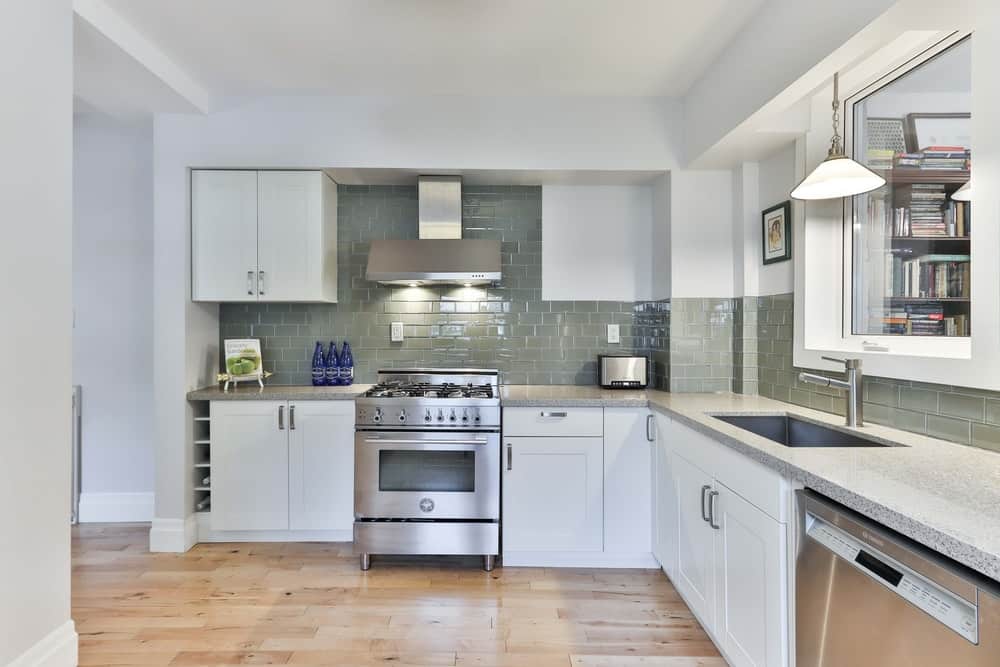Navigating the Maze of Kitchen Cabinet Selection for Your Imminent Culinary Space Revamp
Embarking on a kitchen renovation journey brims with exhilaration, as you sculpt the nuances that transform it into a bespoke culinary sanctuary.
Yet, this venture can also be laden with complexities. Decisions abound: the choice of culinary tools, the optimal palette for your tiles, and the dilemma between a twin-door or singular-door cooling unit.
Enshrouded within these deliberations is a paramount choice: the selection of a kitchen cabinets set. Amidst a plethora of options, how does one discern the cabinets that resonate with their unique vision?
Delve into these insightful pointers for enlightenment…
Ponder Over the Financial Implications
Prior to immersing yourself in the allure of polished brochures and digital galleries showcasing resplendent kitchens, anchor your finances with a well-considered budget.
Beyond the requisite appliances in a kitchen overhaul, cabinetry can significantly influence your financial outlay. An abundance of economically priced kitchen cabinets exists in the virtual realm, yet the pursuit of quality must not be forsaken. Opting for substandard cabinets might lead to premature wear and tear.
This expenditure, though, is not frivolous in the realm of room refurbishment. Pragmatism and a judicious budget are crucial. Excessive spending on cabinetry could jeopardize other critical aspects of your kitchen, possibly leaving you devoid of essential appliances like a stove.
Categorization of Cabinetry
Generally, kitchen cabinets fall into one of three classifications.
Stock Cabinets
Situated at the more affordable end, these cabinets begin at approximately $70 per linear foot. A typical budget for stock cabinets might hover around $2000.
Available at kitchen retailers, home improvement centers, and establishments akin to IKEA, these cabinets might lack robustness, offer limited selections, and often require self-assembly.
Semi-Custom
Cabinets This category serves those prepared to augment their budget, perhaps even exceeding the aforementioned amount slightly.
Priced between $100 to $250 per linear foot, semi-custom cabinets offer a more precise fit for individual kitchens, with costs ranging between $4000-$5000.
Custom Cabinets
As the pinnacle of expense, custom cabinets are tailored to fit your space immaculately, allowing for personal creative touches. For homeowners seeking a trendy and refreshing look, sage green kitchen cabinets offer a stylish alternative, infusing the space with a sense of tranquility and natural charm while adding a unique touch to the overall design aesthetic. However, the cost ascends from $500 per linear foot.
Decide on the Design
Your subsequent decision revolves around the aesthetic of your kitchen cabinets.
Glass
Does the concept of glass-paneled cabinets appeal to you? This option suits those desiring to showcase their ornate dishware as a style element.
While mundane items like cereal boxes or flour bags might not be display-worthy, a couple of glass cabinets can highlight decorative plates and bowls, adding a splash of color to a kitchen with subdued tones.
Frames
Choosing a framed cabinet style usually means drawers and doors are affixed to a framed exterior box and facade.
Conversely, frameless cabinets have doors and drawers directly connected to the cabinet box, sans a frame.
While seemingly straightforward, the choice between framed and frameless impacts the contemporary aesthetic of your kitchen. For frameless cabinets, opting for custom or semi-custom construction ensures durability and quality, compensating for the absence of a frame.
Explore various kitchen cabinet styles online through diverse sellers, like certain companies.
The Enjoyable Segment
This phase involves selecting accessories, hues, and ornamental features for the cabinets.
Here, you determine the overarching appearance of your cabinets, which in turn influences the kitchen’s ambiance.
The extent of accessorizing impacts the cost, which should align with your established budget (refer to the earlier section).
Accessorizing avenues include different handle types, wood finishes, and additional design elements.
Consider integrating built-in power outlets, retractable cabinets, touch-activated features, waste storage solutions, lifting mechanisms, and hooks or rails for kitchenware.
Reflect on the interplay between your kitchen counters and electronic devices. Could the cabinets conceal or highlight these appliances? Do you envisage a bustling kitchen or a minimalist space?
Contemplate incorporating lighting into your cabinet design. Would you prefer internal illumination or under-cabinet lighting accentuating your work surfaces?
All these considerations, stemming from your cabinetry choices, contribute to the overall aesthetic and functionality of your kitchen.
Reevaluation
Assess your existing cabinets. Could they be rejuvenated instead? Refurbishing them might yield long-term financial savings.
If not, selecting a new color could be as simple as sanding and applying a fresh coat of paint. This approach might guide your cabinet selection process.
Additional Insights on Cabinet Selection
Do you possess further insights or suggestions regarding kitchen cabinet selection? What strategies have proven effective for you? Share your style discoveries in the comments below.
For more insights and advice on home projects, explore additional posts on this site.



